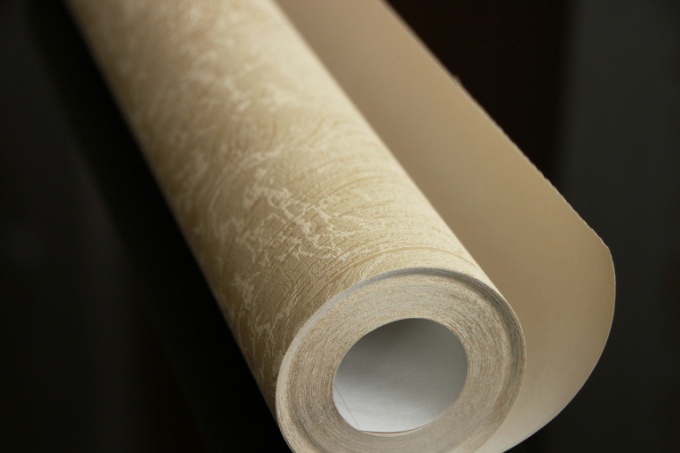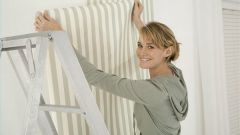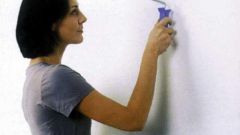Sweep the surface of the chipboard
Usually chipboard is applied at a covering of walls in premises with dry air. Before gluing wall-paper, chipboard should be thoroughly dried, to release all the moisture. In the summer it is enough to open the Windows. In the cold season outside of the plate must be wiped with a damp cloth, and after a few hours to install the room heater.
Remnants of old Wallpaper is a serious enemy to the durability of the coating of a new layer. Therefore, before priming the particle Board should be thoroughly cleaned from episodes the same coverage. Pieces of paper Wallpaper is easily removable when wet, in turn, non-woven and textile coating are removed with a spatula.
Primer and putty
Further preparatory work depends on which side of the sheet of chipboard attached to the wall. If the rough side of the sheet facing the wall, then smooth the surface is thoroughly primed and the seams smeared with plaster on wood. After drying, the wall is cleaned with fine emery paper.
However, this may not be enough, and for improved grip a smooth wall surface with Wallpaper chipboard must be covered with layer of gauze. To do this the entire length of the sheet with nails nailed strips of gauze, primed and stained with oil paint neutral tint.
If the sheet of chipboard attached to the wall with its glossy finish inside, its simply primed and putty.
So over time, the Wallpaper is not showed traces of rusty nails, which chipboard is attached to the wall, it should score hats and cover them over primer oil paint.
After complete drying out of putty you need to check whether one layer of putty to fully smooth the joints. If the gaps between the slabs are laid too far apart, the space can be filled with strips of gauze and carefully putty.
The choice of Wallpaper for chipboard
When choosing Wallpaper for CPD should prefer vinyl and non-woven options. Without the skills of an experienced repairman difficult to glue paper Wallpaper on chipboard, because they require precise application of the strips and do not allow to adjust already attached sheets. In turn, more expensive products simplifies installation at the joints.
It is also important that non-woven, vinyl and textile wall longer than the cheap counterparts will keep the shape, and due to the more dense and durable coating hides irregularities remaining after priming.
To hang Wallpaper you need from the corner towards the door. To overlay the first strip as evenly as possible, is applied to the wall straight vertical line with a plumb. If the Wallpaper does not require adjustment, the strip can be cut in advance, leaving the stock to a 10 cm top and bottom. The picture that must be customized, will require sustained crop marks, also providing for the allowances.
The technique of applying the adhesive also depends on the type of Wallpaper. Paper Wallpapers require the application of the layer on the reverse surface of the strip and the wall. Vinyl and the interlining is attached to the adhesive layer applied directly to the wall.


